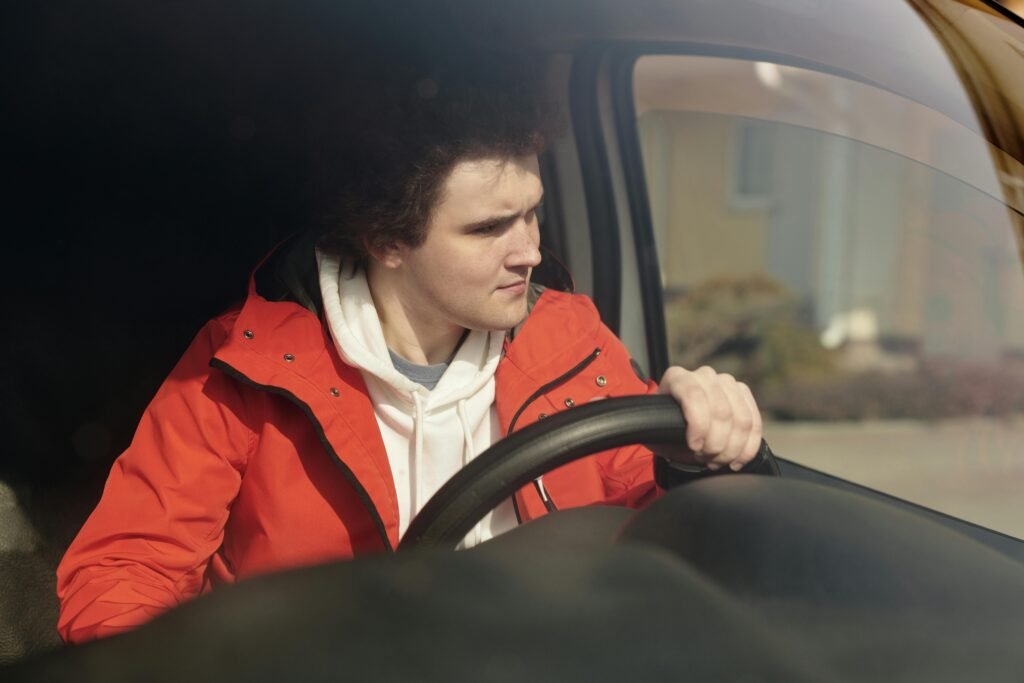Coasting vs Engine Braking | Explained With Real Life Testing
There are a lot of misconceptions around engine braking and coasting. Today, I’m going to clear them all up.
I am going to tell you exactly what engine braking is and exactly what coasting is.
I always do a real-life test before sharing an autopsy, though I already knew the facts. First, I am going to get out on the road and do an actual test, down and back on the exact same route—first using just engine braking and then trying to coast as much as possible to see the real-world differences in fuel economy with both strategies.

Coasting
Coasting, on the other hand, is when you take the engine out of gear and leave it in neutral. There are two ways you can do this. Way number one is by just pressing the clutch in while you’re still in gear. This is still technically coasting because you’ve disengaged the drivetrain. The second way is to actually put the car in neutral. This is also coasting.
This is tricky because, to keep the engine ticking over, the engine now has to inject a tiny bit of fuel—the same as when it’s stationary and idling.
Now, the key to this is that when you coast, there is no slowing down of the car. With engine braking, the fact that the wheels are driving the engine means you feel a braking force.
The more torque your engine has, the more braking force you feel.
With coasting, you don’t get this. That means you can actually go further because nothing is slowing you down apart from air resistance and friction.
Now that you understand the differences, it’s time to get out on the road and do some real-world tests to find out which is actually more efficient.
Engine Braking
Engine braking is not, I repeat, not using the clutch to slow down the car—please do not do this, you will ruin your car. Engine braking is simply being in gear and off the accelerator pedal. When you are engine braking, your engine injects zero fuel.
This is different from when you’re sitting at idle. When you’re sitting at idle, your engine injects a little bit of fuel to keep the engine ticking over. When your engine is braking and you’re in gear off the throttle, your engine is using no fuel whatsoever because the motion of the wheels turning is physically turning the engine over and pulling a vacuum where there should be fuel.
Engine braking is phenomenal because it’s essentially free travel. For the longest time, I thought engine braking was the be-all and end-all. There’s a reason I get 26 miles to the gallon in a 500-horsepower car: I engine brake a lot.
Let’s see.
Real-Time Test
I’m going to try to drive identically in all three tests to give the best comparison. I’ll be staying at 70 mph, and the big difference will be between engine braking and coasting.
I started on a hill. My foot is off the gas, and I’m using engine braking, which slows me down. I’m taking this to the extreme and letting the car slow down all the way to the bottom of the hill.
Do you want to know how many miles per gallon we picked up during this?
We’re up to 30.5 miles per gallon. Pretty good.
Now I’m just about to crest the hill. As I do, I’m going to shift into neutral and coast all the way down, to see how it affects fuel economy.
My car is in neutral now. I’m still losing some speed, settling at 67 mph. I think that’s the balance point between air resistance and the weight of the car pushing me down the hill.
The hill gets a little steeper here. I’ve gained 1 mph. In the first run, the engine brake slowed me all the way down, but this time, I coasted the whole way. I’ve never seen 33 miles per gallon in this car before—this is hilarious!
Now, I’m going to exaggerate things a bit. I’ll speed up to 75 mph and shift into neutral. If this momentum works, I’ll throw it into neutral again.
There’s probably a better way to do this, but I’m exaggerating for the sake of this test.
Heck yeah, my car is now getting 35 miles per gallon!
That’s not an insignificant difference. There might be some variation due to other cars on the road affecting air resistance, but I can’t make this perfectly scientific. I’m doing the best I can. I’m going downhill again, off the throttle, and I’m going to engine brake all the way to the roundabout.
Now I’m in coast mode. The hill isn’t steep enough to maintain momentum, so I’ll coast down to the traffic lights, just like I did with engine braking on the first run.
Let’s see the final results.
With engine braking down this hill, we’re at 34 miles per gallon and still climbing. That’s 34.8 miles per gallon for the first run.
Now it’s 35.3 miles per gallon—almost a full mile per gallon higher.
I’m going downhill again, back in engine braking. I’ve built up some speed just like on the other run, and I’m lifting off the gas to go down this hill. The problem with engine braking is that you lose speed quickly, so you have to get back on the throttle. Engine braking, by its nature, slows you down.
One last coast down the hill—I’ve built up enough speed to even make an overtake. I’m holding this momentum as long as possible. I’m still driving at 77 mph, and it’s not slowing down.
Result
I covered so much distance when I coasted. That was pretty impressive. I went a long way with that coast and was going to engine brake all the way down. It’s slowing us down nicely. I’m just starting to help it with the actual brake, and we’ve achieved 31.4 miles per gallon as the final number.
I am at the end of the test now.
I’m going to coast all the way down this hill, and we’re going to see what the differences are.
I’m just helping it along with the brake now because we do need to stop.
I get the final number, which is 33 miles per gallon.
That’s actually quite impressive.
In conclusion, coasting is consistently 1.5 to 2 MPG better than engine braking, which absolutely shocks me, because I’m a big engine braker.
But coasting is better now.
I did the test very specifically on the motorway, mainly around hills and focusing on conserving momentum.
I think if I were to redo this test in a town, where you’re in a situation like approaching a red light, engine braking is better because you use no fuel on your way to stopping.
But if you’re in a situation where you can conserve momentum and continue moving after your maneuver, or whatever reason it is that you’re off the throttle, I think coasting is better.
So, what I’ve learned is that there are two ways to get off the throttle, and they are both useful in different situations.


